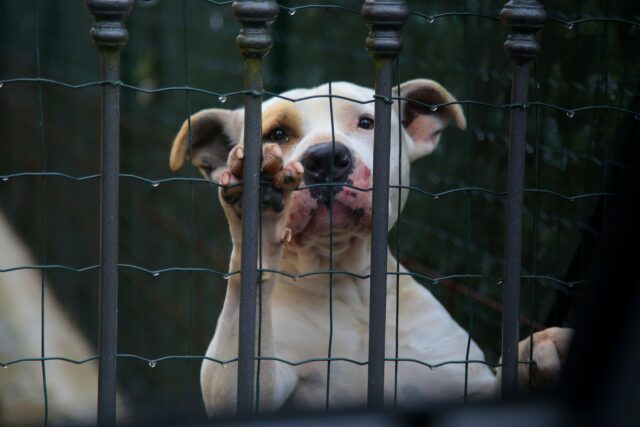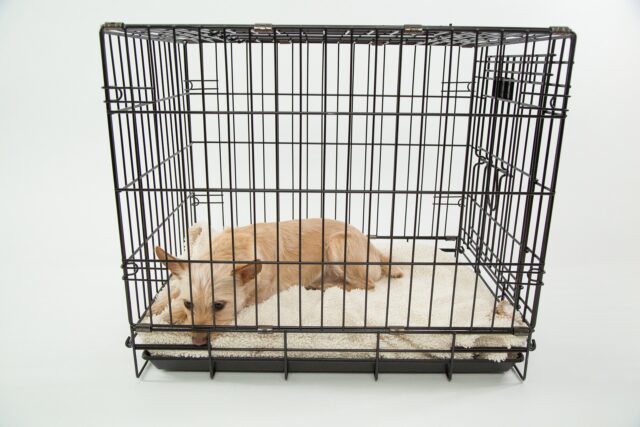Providing a safe space for your puppy is a must.
For humans, dog crates may look like a cage but that isn’t the case for dogs. But that’s if it’s used properly. Crates are used to discipline or train dogs but are never used as a form of punishment. Ideally, it should be a safe space for them which is why it’s important to create a comfortable environment that will give them a sense of security and can help them be calm when training. That way, when their instincts kick in and find comfort, they’ll know that they can run to their crate and relax.
Things to remember
Although crates are essential when housetraining a puppy, you should always remember that this isn’t an instant solution to canine behavior. When trained incorrectly, your furbaby might feel trapped or agitated. Here are some things to note when crate training.
This isn’t a form of punishment
We’ve reiterated that crates should only be used as a safe space for puppies and never for punishment. For example, enticing them with treats or interacting with them with a toy to enter a crate when needed is more effective than putting them inside after they misbehave. Encourage them to enter at their own will, not force them in when they’ve done something bad.
Don’t leave your puppy in the crate for too long
When your puppy stays inside a crate for too long it won’t be able to move around and exercise. Also, they’ll have less human interaction which can make your dog feel depressed, frustrated, or anxious. If you’re busy for a whole day or days, you might want to arrange a pet-sitting service instead of trapping them inside a crate for a long time.
Puppies that are less than 6 months old shouldn’t be in a crate for more than 3 to 4 hours at a time since they can’t control their bladder and bowels. That also goes for adult dogs. Crate train your dogs until they’re able to handle themselves inside your home without accidents and destruction. The crate’s door can be left open for them to freely enter and go out while you’re away. Just like us humans, we can find an area of our house as our spot but that doesn’t mean we should stay in that room forever.
Beware of whining

When your puppy whines, it’s difficult to know whether they’re just doing it for attention or needs to go outside. When they do this, try to ignore the whining or observe what they need. Do not yell or pound the crate when they make a noise because they’ll just feel worse.
Choosing a crate
Once you start looking for crates, you’ll find out that there are tons of options out there. There are plastic, collapsible, and metal crates. A perfect crate should be big enough for your dog to stand up, lie down comfortably, and turn around easily. Other crate training supplies such as bedding, bowls, treats, toys, and mats should have a room inside the crate.
Training process
Crate training can take up much of your time depending on your puppy’s behavior and experience. It may take days or even weeks to do so, so it’s important to associate the crate with something pleasant and don’t rush them. Here are some steps to follow when crate training a puppy.
Establish a proper mindset
Before introducing crate training to your puppy, you’ll need to have your pups in a relaxed mindset so they can associate the crate with a happy feeling. You can start by bringing them inside for 10 minutes at a time and gradually increase the time when they’re used to the feeling already.
Introduce the crate

Store your pet’s crate in an area where your puppy can see you, so ideally, put them in an area of your house where your family usually spends time. Make the crate as comfortable as possible. Here, you can add bedding and a soft blanket. Then leave the door open and let your puppy explore the crate freely.
If your puppy is having a hard time entering a crate, you can encourage them by speaking in a positive tone while making sure that you won’t frighten them. Aside from that, you can entice them to enter the crate by giving them treats. Lastly, don’t force them to enter the crate if they’re scared. In case they aren’t enticed by the treats, you can bring their favorite toy inside. Getting familiar with a crate may take days or even weeks for dogs to get accustomed to.
Feed them in the crate
After getting accustomed to a crate, you can start feeding them a. This way, your puppy will learn to associate the crate with something pleasant. If they’re comfortable entering, you can put the food along with an interactive toy at the back of the crate but if they remain reluctant, you can start by putting the food just as far so they’ll have the option to go out right away.
Every time you feed them, start by putting the food near the door and work your way towards putting it at the back. Once they’re comfortable eating, close the door but make sure to open them after they finish their meal. With each meal feeding time, try to leave the door closed a little longer until they learn how to stay inside the crate for at least 10 minutes after finishing their food.
Practice longer crating periods
After your dog learns how to eat inside a crate without any signs of fear or anxiety, it’s time for them to learn how to stay inside for longer periods (not exceeding 3 to 4 hours). You can start by giving a command that will register as their sign to enter the crate. For example, you can hand out a treat, praise them, or point to the crate and then reward them once they enter.
Sit quietly near the crate and observe them for about 5 to 10 minutes and then leave for a few minutes. Once you return, quietly sit near the crate for a while and release them. Repeat this process several times each day until they get used to it then gradually increase the length of their stay inside. When they’re able to stay inside quietly without seeing you for 30 minutes, you can start leaving them crated. But don’t leave them for too long.
Make them feel independent inside a crate
When they’re ready to spend at least 30 minutes inside a crate without a sense of fear or anxiety, start leaving them for short periods. Don’t prolong your departure and make it low-key so that they won’t feel separation anxiety. Praise your dog for a while, give them a treat when they enter a crate, then leave quietly. When you get back, keep your arrival low-key and don’t associate the crate with being left alone which is why it’s important to practice the intervals of crate training.
Be patient

It may take several months before they get used to staying comfortably inside their crate. You’ll get frustrated and happy but despite the ups and downs, the feeling would soon feel rewarding once you and your puppy can develop the habit of staying inside a crate.



